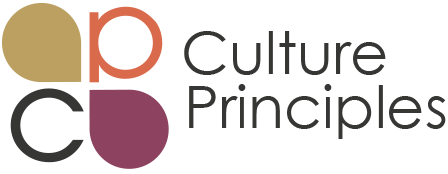
Ah, the elusive notion of “cultural fit,” a phrase often tossed around in conversations about hiring and team-building. Joe Ferreira’s recent piece in Forbes, “Hire For The Culture You Want,” touches on essential elements of recruitment strategy, emphasizing the need to look beyond a resume and practice inclusive hiring techniques. While I commend the article for its insights, let’s take a moment to dig deeper and explore the nuances that are often overlooked.
The Double-Edged Sword of Cultural Fit
Firstly, let’s unpack the concept of “cultural fit.” On the surface, it may seem like a straightforward idea: hire people who align with your company’s ethos and values. But let’s pause and ask ourselves: whose culture are we fitting into? The answer often reflects a culture crafted by historical norms, systemic biases, and a leadership team that may not represent the diversity we aim to achieve. When organizations prioritize “cultural fit,” they risk perpetuating a monolithic culture that stifles diversity, equity, and inclusion (DEI).
In my own journey, both as a diversity consultant and a woman of color navigating different corporate landscapes, I’ve seen firsthand how the term “cultural fit” can become a smokescreen for bias. I remember consulting for a male-dominant leadership team where “cultural fit” meant hiring individuals who could “hang with the team”—a euphemism for participating in after-work drinks and fantasy football leagues. What was meant to foster camaraderie inadvertently became a mechanism for exclusion, leaving out those who didn’t fit this narrow mold.
Rethinking the Narrative
Leaders, listen up: our role isn’t just to preserve culture; it’s to evolve it. We must intentionally dismantle barriers that hinder DEI. How can you be sure your “Division of Culture” isn’t merely a group of like-minded individuals reinforcing existing biases? Are the attitudes you align with genuinely inclusive, or are they perpetuating stereotypes and unconscious biases?
To truly diversify and foster inclusion, consider integrating a DEI lens into every stage of your hiring process. In my work at Culture Principles, I’ve helped organizations operationalize this by incorporating DEI metrics, assessments, and workshops into their hiring practices. The goal is to examine where the gaps are, identify the implicit biases, and then close those gaps strategically.
Words, Language, and Context Matter
Let’s also talk about the power of words. The language you use in job descriptions, interviews, and internal communications can subtly shape your organization’s culture and inclusivity. Phrases like “rockstar developer” or “ninja marketer” may seem catchy but can perpetuate gender stereotypes and deter a more diverse applicant pool.
Unleashing the Power of Collective Intelligence in Hiring
Kudos to Joe Ferreira for his candid admission about the limitations of making hiring decisions in isolation. This kind of transparency is crucial in driving the conversation about more inclusive hiring practices. However, it’s important to note that merely incorporating diverse perspectives in the hiring process is just the tip of the iceberg. While it’s a positive step, it doesn’t necessarily eliminate the systemic biases or deep-seated cultural barriers that persist in many organizations. We must ask ourselves: when we aim for “smarter, more informed decisions,” what are the guiding principles and whose perspectives are being considered?
Taking this a step further, what if we were to design a system that doesn’t just invite input but actively involves various departments, roles, and demographic groups in co-creating the organizational culture? By doing so, we can harness a level of collective intelligence that transcends the sum of its parts, giving rise to a genuinely inclusive and equitable work environment.
In summary, the concept of hiring for “cultural fit” is overdue for an overhaul. It’s not merely about aligning new hires with the existing culture; it’s about evolving that culture to be more inclusive and equitable. True commitment to this change means recognizing and confronting the inherent biases in our current practices. Let’s not just change the narrative; let’s rewrite the entire playbook on what it means to build an equitable, inclusive workplace. Are you with me?
